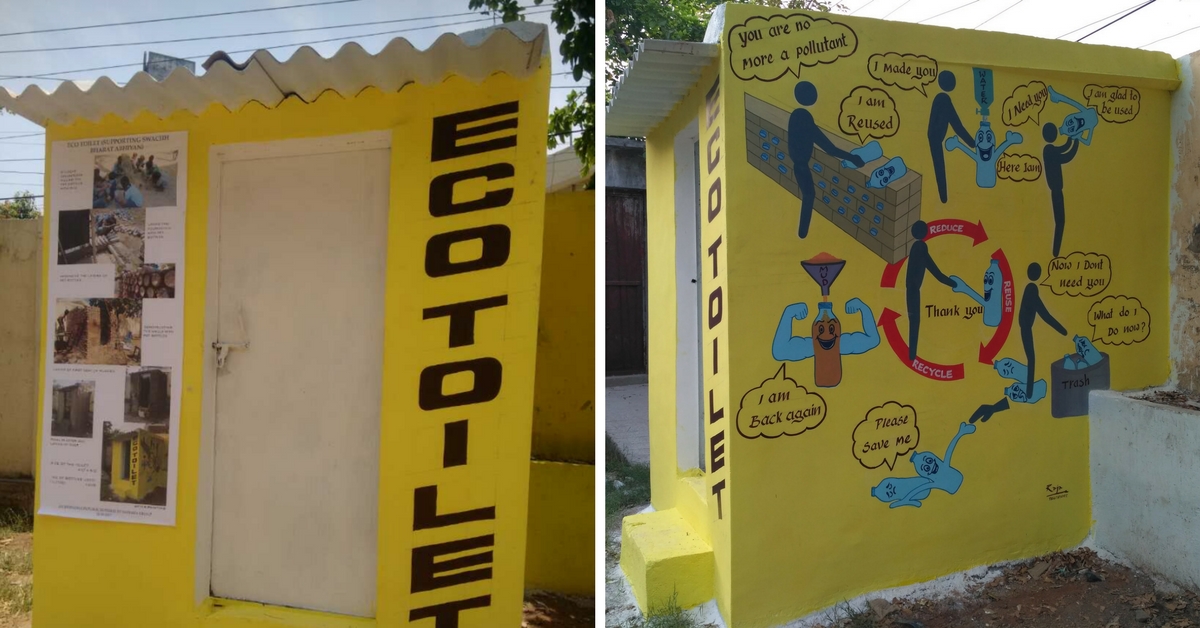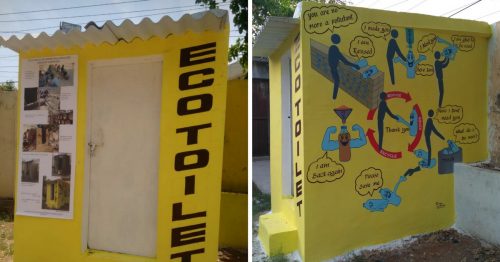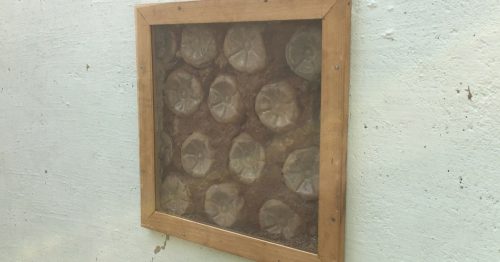Plastic Bottles to Build Toilets: How One Architect is Solving Two of India’s Biggest Issues!
Inspired by the Swachh Bharat Abhiyan and its focus on eliminating open defecation, Rashmii Tiwarii, an architect from Hyderabad, reuses PET bottles to construct public restrooms.

Did you know the Indian cricket team’s jerseys are made from recycled PET bottles? To be precise – 33 bottles make a single outfit, jersey and bottom included.
Recycled plastic is a versatile material, and India capitalises on its potential.
The country is said to have one of the highest recycling rates for polyethene terephthalate or PET, an all too familiar material of plastic that we see used to manufacture water bottles and food containers, says a study conducted by the Council of Scientific and Industrial Research (CSIR) – National Chemical Laboratory (NCL).
Nearly 65% of the PET made in India is said to be recycled at facilities, by the unorganised sector and a small portion of it is reused in homes.
Encouraging, given the seemingly poor state of waste management in the country.
Unrelated, but equally disheartening is the alarming rate of open defecation in India, easily one of the highest in the world. More than half of the rural population (52.1 percent) of the country still defecates in the open. That’s a shocking 400 million people. A sanitation crisis, to put it mildly.
Meet an individual doing her part to tackle waste management and India’s sanitation crisis, unlike so many armchair critics in the country.

Inspired by the Swachh Bharat Abhiyan and its focus on eliminating open defecation, Rashmii Tiwarii, an architect from Hyderabad, reuses PET bottles to construct public restrooms.

Her final project in college was modelling such a toilet, and she passed with flying colours, realising that this had the potential to help solve a lingering sanitation problem in India.
The first place she decided to build the PET toilet was a government school in Hyderabad – The Dr Ambedkar Government School. With the principal’s support and Rs 18,000 of her own money, Rashmii got to work.
“I used cement and sand for plastering; that’s how I could cut down the construction costs by 30 percent. I used 1,200 one-litre PET bottles in place of conventional bricks. For the mortar, inside the bottles, I used mud, cow dung, and cow urine,” she says.

She intends to do this exclusively in government schools, slums and villages where there is a scarcity of toilets.
“I chose toilets as there is an acute scarcity of toilets particularly villages, government schools and slums. It is observed that the girl students particularly are facing difficulty in schools. It is learnt that in many parts of our country people defecate in the open, while women wait for the sunset to relieve themselves. Many times their modesty and life is at risk,” concludes Rashmii.
You may also like: Searching for a Toilet in Thiruvanathapuram? Mobile Toilets Are Coming to Your Aid
So how long does it take to make such a restroom?
“It took two weeks for me to complete the construction and we tested the impact of weather conditions. When all worked well, it was inaugurated on in May,” says Rashmii.
When the eco-toilets were completed, Rashmii was recognised for her inspiring work. She was congratulated by Harichandana Dasari, the zonal commissioner of the central zone, GHMC (The Greater Hyderabad Municipal Corporation) at that time and has been asked to build 60–80 toilets in one zone under the Swachh Bharat Abhiyan.
Like this story? Or have something to share?
Write to us: [email protected]
Connect with us on Facebook and Twitter.
NEW: Click here to get positive news on WhatsApp!
If you found our stories insightful, informative, or even just enjoyable, we invite you to consider making a voluntary payment to support the work we do at The Better India. Your contribution helps us continue producing quality content that educates, inspires, and drives positive change.
Choose one of the payment options below for your contribution-
By paying for the stories you value, you directly contribute to sustaining our efforts focused on making a difference in the world. Together, let’s ensure that impactful stories continue to be told and shared, enriching lives and communities alike.
Thank you for your support. Here are some frequently asked questions you might find helpful to know why you are contributing?


This story made me
-
97
-
121
-
89
-
167











